Be warned, this one’s a biggun.
Just as Japan likes to borrow words from English, English likes to borrow words from Japanese. Well, English likes to borrow words from every language, but you get what I mean. Aside from obvious ones like samurai or ninja or ikebana, here’s some words of Japanese origin you might have been unaware of: tycoon (as in, a business tycoon) comes from “taikun” meaning “leige lord”, honcho (as in, head honcho) comes from “hanchou” meaning “group leader”, and skosh (as in “shove over a skosh, would you?”) comes from “sukoshi” meaning “a little” or “a few”. Ginkgo is from classical Japanese “ginkyou” – the modern-day words are “ichou” (for the tree) and “gin’nan” for the nut. The rather topical word “typhoon”, despite its strong similarity to the Japanese equivalent “taifuu”, did not come to English from Japanese – in fact, it’s Greek, “tuphon” (though it’s possible the vowel sounds in English were shaped by the Chinese form “taifung”) – Arabic, Hindi and Persian all have similar sounding words for the same sort of storm, so clearly it’s a thing.
Broke the fast. My first breakfast at the new hotel… which had curry, again. I can’t work out if curry at breakfast is an autumn thing, or if I’m just so unobservant that I’ve never noticed before that it’s always been there. The miso soup had snow peas in it, which was new. Also, the TV in the dining room was showing exactly the same show I’d watched last night, the one with the costume host with the CG face.
Then it was time to head out of my hotel for the next surprise discovery event that kept me near Tokyo instead of heading north: the Kawagoe Festival.
Strictly speaking, the festival of Hikawa Shrine in Kawagoe, it’s held on the third weekend of October each year, and is Kawagoe’s biggest event. Kawagoe is a smallish city in Saitama Prefecture, a few stations from Omiya – and trains from Toda-Koen go directly there, which is why I’m staying in Toda-Koen for this part of the trip (it’s one of the nearest Toyoko Inns to Kawagoe). It’s sometimes called Little Edo, for its many historic buildings. After the Meiji Restoration, the city was very briefly the capital of Kawagoe Prefecture in 1871, before being made the capital of Iruma Prefecture that same year, until it was merged with Saitama Prefecture in 1873. (Kawagoe is also going to be the host city for the golf events of the 2020 Tokyo Olympics, so they’re going a little bit crazy over that.)
The festival began in 1648 as a parade of Hikawa Shrine’s mikoshi (portable shrines), but influenced by Edo’s now-defunct Tenka Festival, festival floats were later added, one maintained by each district in the city. The floats are entirely human-moved, despite being about eight metres tall and weighing as much as an elephant – each is two storeys tall, and has a figure of a historical person standing on top – the upper storey and figure may be retracted into the lower storey, a feature copied from the Tenka floats, which needed to fit through the Edo Castle gates so that they could be paraded in front of the Shogun. They also have a small stage on the front for a band and a dancer, and the entire top of the float can be rotated independently of the wheels. (The band is always the same, mind: one big drum, two small drums, a flute and a Japanese type of handbell called a kane (that’s kah-neh), which is played by striking with a mallet. The dancer wears a mask – usually a lion, a fox, an old man or an old woman.)
Today, there are twenty-nine separate floats – twenty-eight maintained by residents in each district, and one owned by the city, though only twenty floats typically take part in the festival. The festival was declared a Nationally Important Intangible Folk Cultural Property by the Japanese government in 2005, and included on the UNESCO Intangible Cultural Heritage List in 2016.
The festival runs for two days – Saturday and Sunday – and attracts over a million visitors in that time, and the entire historic town centre is closed to vehicular traffic during that time – all the way from the near the JR Station up to Hikawa Shrine, a distance of about three kilometres. Google maps has a handy indicator to warn people. (Pointless side note: after staying in Chichibu, served by the Seibu Railway company, then Nikko, served by Tobu, now I’m in Kawagoe, which is served by both (as well as JR).)
But (since according to the festival website) official events wouldn’t start until the Jink0-sai (mikoshi parade) at 1pm, I thought I’d head over in the morning and see as many of the historic structures and areas as I could manage. So I did. And when I arrived, I discovered festival food and game booths already being set up around the place. First it was a couple on the side of the road at the edge of the closed-off section, then a car park with booths all around the sides and tables in the middle, then a long pedestrian mall lined all the way along; every time I thought I’d found the big centre of the festival, I kept turning a corner to find ever greater concentrations of stalls. And it was already getting fairly crowded with people. (Also saw, at the barrier of one of the closed-off streets, two cars parked diagonally across the lanes to form a kind of slalom, with signs saying “terror alert” in English, which was a little disconcerting.)
And then I looked down an alley just in time to see a festival float round the next corner, several hours before I expected to see any floats moving around, so I chased it down to watch for a bit. It’s pretty impressive watching up close (and considering how narrow the street we were on was, close was pretty much the only option).
After popping back to the JR Station for a quick Pokémon Go raid (as one does), and a stop to divest myself of my bags so I could take my jumper off (and never put it back on again for the rest of the day – after the cool weather in Nikko, we’re straight back in the hot humidity I had in Tokyo… actually, I carried my umbrella around all day for nothing too), I strolled back up the pedestrian mall, seeing what was available at the stalls. After the Ryusei Festival when I ate one thing and was full, today I decided to try as many things as I could. First: some dango – both sticks soy sauce flavoured, but one wrapped in nori (though honestly, in mind of my plan to try as many things as I could, getting two sticks was kinda silly). Then a chocolate-coated banana (nice enough, but may have been nicer if frozen… but I guess that’d be a bit tricky to manage at a festival stall).
Then I finally headed for the place where I was heading when I got distracted by the passing float: Hon-Kawagoe Station (the Seibu-line station), and what turned out to be one end of the actual centre of the festivities in the station car park, continuing as far northwards as I could see up the road. But what drew me to Hon-Kawagoe Station was the Information Centre… which was offering a manhole card. One of the ones I’d colour-coded green on my map of card locations (meaning I’d have to make an effort to not pass right by it – actually, there was another green one near Kegon Falls the other day, but tragically they were out of them… and had possibly been out of them for over a year).
There was also a festival information table there, and as it was already getting on towards one o’clock – the time the Jinko-sai was meant to start – I stopped to ask them the intended route. And in exchange for filling out a short survey, I was given a plastic document file with the Kawagoe Festival poster on the front.
I also discovered an advertisement for an app about the festival named Kawagoe Festival Navi. It’s quite a clever app; it’s got a map with live positions of all the floats, and information about them, and maps of toilets and other amenities, and the festival schedule – and, as I discovered later, a map of the Jinko-sai route, so I hadn’t needed to ask at the information desk after all. It’s all in Japanese, mind – doesn’t seem to be an English version.
So, I power-walked my way up the main street – and let me tell you, it was quite a novel experience walking right up the middle of the main street – and on the way got distracted by a parked float with a lion on the dance stage. See, it’s good luck to let the lion nibble on your kids for a bit, so child after child was being held up to be munched on. Some of the younger kids were… less than impressed.
After a few more blocks, I came across a policeman coming the other way who was shooing people off the road. I was rather disconcerted by this, until I realised the reason: I’d reached my target, and the Jinko-sai parade was about to come through. According to the festival app, the order of the parade is as follows:
- Taiko drum
- Parishioners’ representatives
- Flagbearers
- Sacred sakaki tree
- Five-colour pennants
- Flag with the shrine’s mark
- Flags of the four cardinal gods
- Sarutahiko (a shinto god)
- Lions
- Musicians
- A reliquary (I’m not sure what’s inside – just says “offerings for the gods”)
- Priests and miko
- Mikoshi for the male and female gods
- Sacred horse
- The shoe-bearer (carrying the gods’ shoes in a basket)
- The shrine’s chief priest, on a horse, being shaded by the umbrella-bearer
- A shoe-bearer carrying the chief priest’s shoes
- Two revered maidens on a palanquin
So yeah, it was quite the parade.
After the parade had gone past – and the three floats that had been stalled by the parade’s approach – I had a look at some of the nearby historical buildings, including the Toki no Kane (Bell of Time) belltower. It’s sixteen metres high, 350 years old, and still sounds the time at 6am, noon, 3pm and 6pm (though I’m not sure I actually heard it today).
I decided to visit Hikawa Shrine itself from there, and it too was quite packed with people, including a looong line of people waiting to pay respects at the main building. I instead joined the fairly shorter queue to get a goshuin. Unsurprisingly (given the crowd), they weren’t hand-writing them today, but it’s an interesting two-page spread, with colour images. Gonna have to paste that one in very carefully.
Where most shrines I’ve seen have one rack for people to hang ema on, Hikawa shrine had a whole tunnel for them, which was absolutely packed from end to end with ema, including overhead. As I came out of the shrine, I happened to pass a float. It seemed to be having issues making itself short enough to fit under some powerlines, so instead, the people on the float sat on the roof of the float and lifted up the powerlines with their hands, which gave me all manner of heebie-jeebies.
Once I’d finished exploring the shrine and surrounds, I noticed I was fairly near the manhole that the card I received referenced, so I went to see that. Then I realised I was about half a block from the Honmaru Goten (“inner bailey palace”), the only remaining structure from Kawagoe Castle (which is apparently the nearest publicly-accessible castle to Tokyo, as Edo Castle itself is the home of the Imperial Family). It was only 100 yen to enter, so quite affordable. And quite pretty – I had a sit-down on the floor with some others and looked out over the garden for a while.
Palace seen, I headed back towards the festival, grabbing a buttered potato on the way. Then some karaage (deep-fried chicken) in a cup.
Wandered around a bit more watching the floats. I found at one intersection there was a set of over-hanging traffic lights that appeared to have been folded back out of the way so that floats could pass. I wonder if they were specifically designed like that for the festival, or if all traffic lights in the country can do that. I’d also worked out that the increasingly numerous scrape marks I’d been seeing all over the roads – including big donuts at intersections – were from the wheels of the floats. The donuts are from the floats being turned on the spot. The floats also have men with big poles to help them start and stop – to start, they jam the poles under the back of the wheels and lever up, to stop (and make minor course corrections), they stick the poles in front of the wheels and let the wheels run them over.
Heading down a slightly more minor road, I pulled into Kawagoe Kumano Shrine – still not entirely sure whether it’s a subordinate shrine for the Kii Kumano shrines or not. This was also quite popular. And they were hand-writing goshuin – I got two, one for Kumano Shrine, and one for Kawagoe Zeniarai Benzaiten Tsukushima Shrine, which was also on the same premises.
Popping out of there, I headed for a nearby Pokémon Go raid at a tiny shrine nearby (yeah, I play PoGo constantly as I’m walking around in Japan, but there’s a point to this specific bit of description, so please bear with me), but I was a bit late thanks to my time spent at Kumano Shrine, so although I was surrounded by literally scores of other people also taking part in the raid, they were all already in battle, so I wound up in the leftovers, trying to scrape together enough people to win the battle with. And I happened to find myself standing next to a kid and his parents who were also in the same raid group as me. After a long and difficult battle, we won on the second attempt.
At which point, the kid’s mother, who was a member of one of the district associations, gave me her… neck cloth thing. Uh, I’m not sure of its name, but it’s worn by all the members of each district, it’s a unique colour for each district, and it’s got the name of the district and the name of the district’s float (the floats are named for the historical figure on top – this float was Tokugawa Iemitsu (a test for those paying attention – who was he, again?) of the Shintomi-cho First District). Point is, she assured me that if I were wearing the cloth, I would be allowed to help pull the float, if I could find it. (I’d actually seen another foreigner pulling a float earlier – I was wondering how he’d gotten in there.) They also asked if they could all exchange Pokémon Go friend codes with me. It was sunset by the time I was done there.
Fortunately, with the assistance of the app, I knew precisely where the float was, though it took me almost half an hour to battle my way through the crowd to reach it, and when I did, it was already parked for the float display part of the festival – the floats all sit in place so that people can come and admire them, though I wasn’t expecting that to start for another half hour. Instead, they had the lion out again, conveying blessings upon the children, but he was soon replaced by… a fox, I think, who was conveying cup noodles upon the children.
Soon, it’d be time for the next event – a display of firefighter ladder techniques. A couple of blocks away, but if I was lucky, it’d only take me twenty minutes. On the way, I grabbed something called a “hattogu” in Japanese – not too sure what it’s supposed to be in English, but it was also being marketed as a Korean-style hot dog, basically a huge block of cheese on a stick, with a token bit of sausage at its base, covered in batter, breadcrumbs and more cheese, and deep-fried. Yum. Healthy.
I was making fairly good progress up the road, so I decided to pop into Renkei-ji as I passed by. Turned out the temple grounds were absolutely packed with festival booths – including a haunted house. I had a look around, then left by the back entrance. Unfortunately, I failed to notice the crowd was parting around a waist-high stone pillar, and ran right into it, knee first. Quite painful.
I arrived at the ladder display a little after it started, and found the street packed with people. It was an impressive display, but pretty much unlit aside from the camera flashes of people close to it. Deciding I’d seen enough, I decided to beat the crowd out of the area… at which point, the display ended anyway, so everyone started to leave. Grabbing some Pocari Sweat (for ion replacement) out of a vending machine, I went to go find my adopted float again.
The first person I asked about letting me help out was quite perplexed, but maybe I just used the wrong words. I went to go find someone more in-charge-looking to ask, and promptly came across the family I’d met before, who all but grabbed me and dragged me into the pulling team.
And with that, the festival’s main evening activity commenced. Called Hikkawase, the floats would wander roughly at random. Each time two floats meet, they stop, rotate their tops to face each other, and immediately commence a dance-off, while all the float-pullers holding lanterns stand in between to cheer on their respective sides. I honestly have no idea how they decide who wins, though, or what the benefit is. Also, whenever we’d pass a district’s home base, or a VIP gallery, we’d stop, turn to face them, and dance to them. Every now and then when the float was stopped, the children pulling would be summoned to the float to have lollies thrown to them.
I’d honestly intended to only do it for a bit and then strike out on my own again, but I was having so much fun I wound up staying for the whole time – about three hours, I think. Wound up being short periods of strenuous activity interspersed by long periods of standing around waiting, but I was also able to get a pretty good view of things – and I realised part-way through that my neck cloth also allowed me to stand much closer to take photos than if I were just a member of the crowd. Plus, on my own I’d have to spend my time wrangling with the crowd – in the pulling team, the crowd had to wrangle with us. If we needed more room for the float, we could just hold up the rope and literally shove the crowd out of the way – often the policemen attached to the float would help out. I admit being stationed next to the kids made things a little tricky – I had to pull one-handed at a bit below waist-level, otherwise I’d be running over the kids or yanking the rope out of their hands, and after the first few minutes, my arm was so tired I could hardly lift my camera to take photos, and somewhere in the middle I realised that the collision with the stone pillar earlier had raised a noticeable lump on my knee. Also, we spent most of the time putzing around the station area away from the other floats, so not a great deal happened, though occasionally we’d wind up in three- and four-way dance-offs. (Dances-off?) I confess I’m not honestly sure if the entire pulling team was necessary – when we turned corners, the ropes would turn first, meaning the more pullers turned the corner, the fewer of them were actually pulling on the float, yet it continued moving. Actual rotations were done by stopping the float, and then a bunch of men just pushed it around on the spot.
I got a little bit of attention from the crowd, though. One girl did an actual double-take when she passed me, and one man asked to take my photo. I actually quite liked how his photo came out when he showed it to me – almost asked him to take one with my camera, but the drum major had just signalled that it was time to move on. I’d asked one of the lantern-holders take one of me earlier.
At one point, though, all the kids and their parents – which is to say, the entire family that sponsored me – abruptly vanished, for no apparent reason that I could see. It basically left me managing about a three-metre section of rope on my own. On the one hand, more room to stretch out. On the other hand, they’re authentic traditional ropes, so they couldn’t be allowed to touch the ground, so I could no longer leave the rope to run off and take photos when we were stopped. Eventually, we turned town a tiiiiny tiny alleyway, which I thought was far too tiny for us to fit, and I was utterly perplexed as to why we were going that way… until I saw the bit storehouse up ahead, and realised this is where the float lived when it wasn’t… uh… floating.
With the top storey retracted, we carefully edged down the alley bit by bit, with people on top holding powerlines out of the way with their hands, again. Perhaps the lower cables are cable TV, or something. And then the float was very carefully edged backwards into the storehouse, only juuuust fitting through the doorway. And the band played the entire time the float was being put away, only stopping the moment it was completely inside. I’m not sure they stopped at all for three hours, but I’m sure they swapped for new players while I wasn’t paying attention – I’m pretty sure there were at least two dancers, maybe even three.
And then we were done. And also it was about 10pm. I’d hoped to grab some yakisoba or something for a late dinner, but sadly all the stalls had closed down – the dango stall near the JR station I’d eaten at earlier still had some sticks left, but I wasn’t sure I felt like that again. Instead, I headed back to the train station – only just arriving in time for the last rapid express train for the night (though there’d be three more all-stops local trains, but not for a while).
Arrived back at the hotel by about 11pm, quite exhausted, and quite ready for bed. And everyone else gets to do it all again tomorrow. It’s basically at this point that I suddenly realised I’d failed to visit about six things I’d wanted to do in Kawagoe – something for next time, I suppose.
Today’s photo count: one thousand and six
Today’s step count: 26,625 steps – 18.6 kilometres – 13 flights of stairs. I felt like I walked the entire length of the festival area about six times.
Today’s goshuin count: Three – the double-page spread at Hikawa, then the two at Kumano.
Today’s stamp count: Two – JR Kawagoe Station, and I also found a festival stamp outside one of the district team home bases. Thing is, it was sitting in a box labelled “stamp rally” with a bunch of other quite similar-looking stamps, so I slightly wonder if there was a stamp rally I was missing out on, or whether that was an box of old stamps from prior festivals. The particular stamp I got is dated 2000.



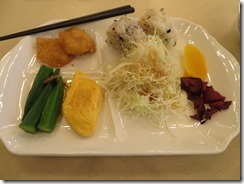
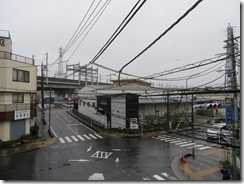
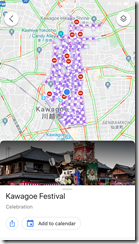
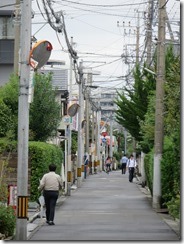

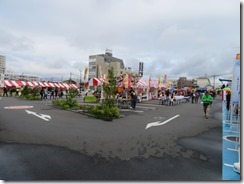
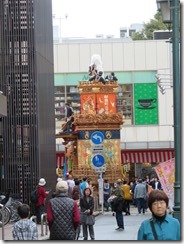
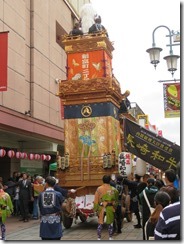
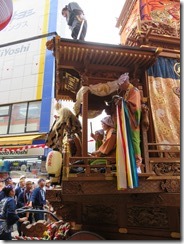
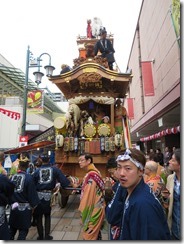
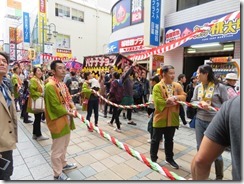
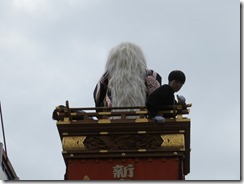
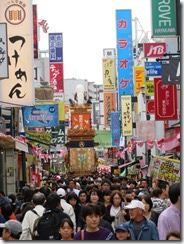
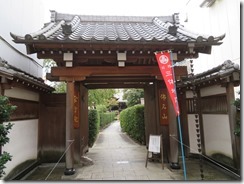


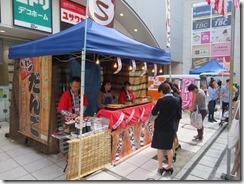

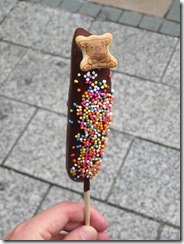

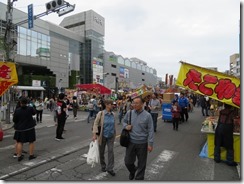

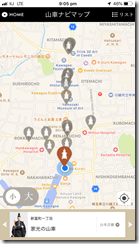
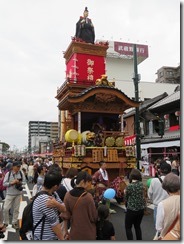
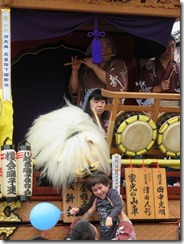
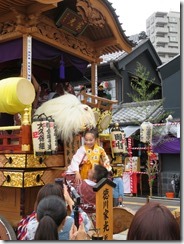

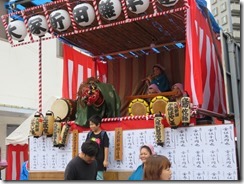
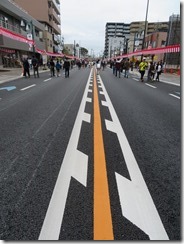


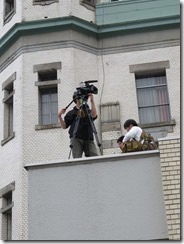
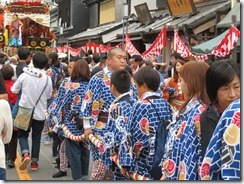
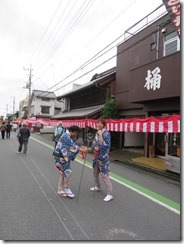
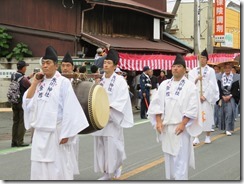

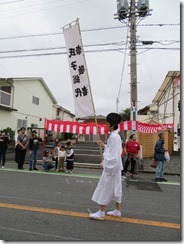
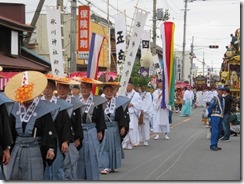
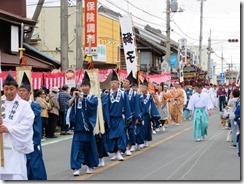
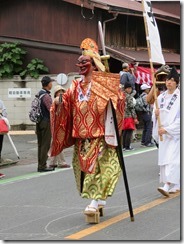
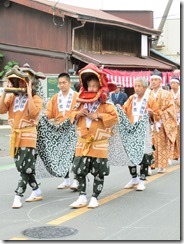
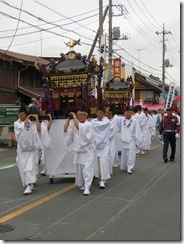
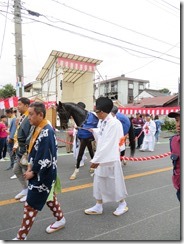

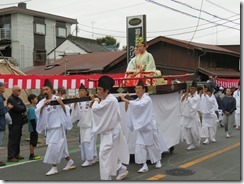
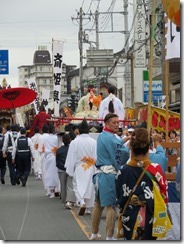
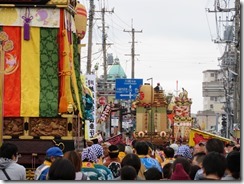
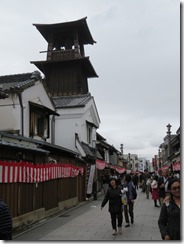
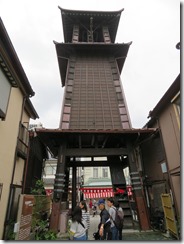

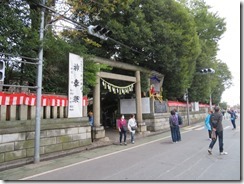
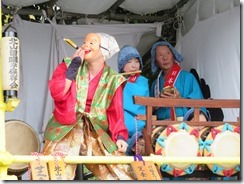
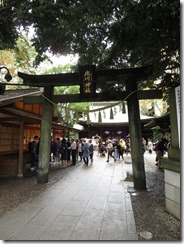
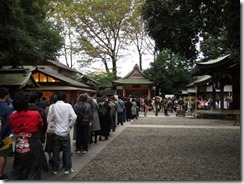
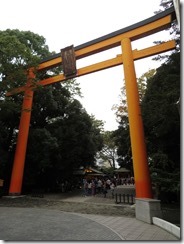
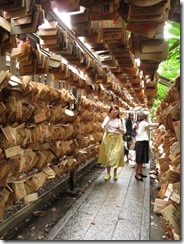
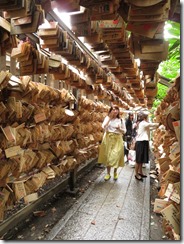
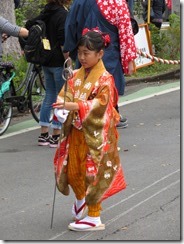
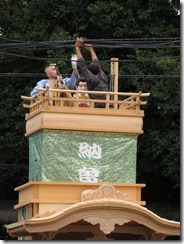
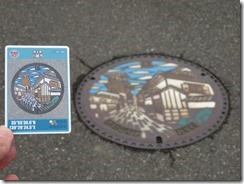
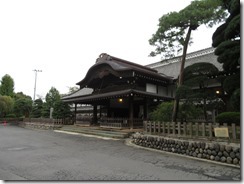
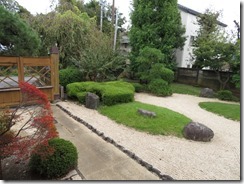
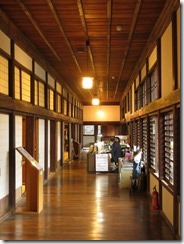
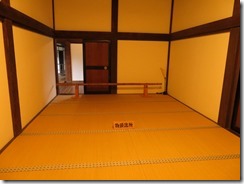
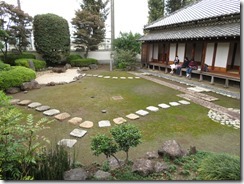
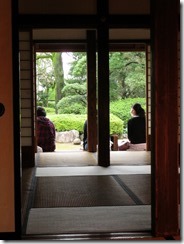


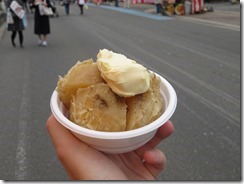
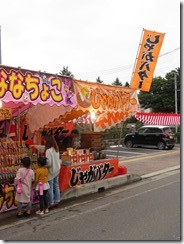
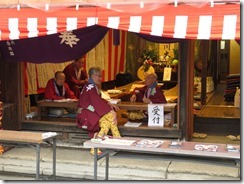
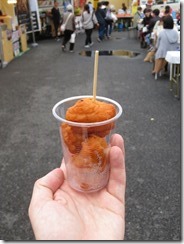



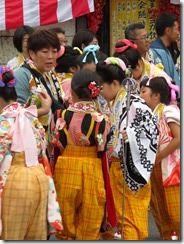

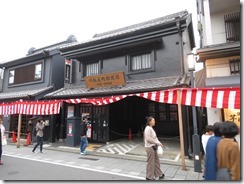
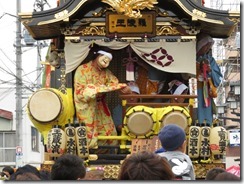
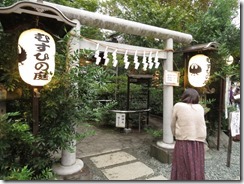
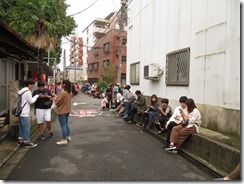



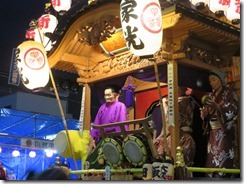
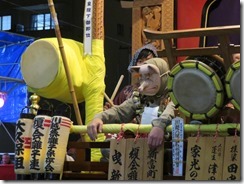
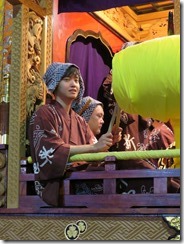
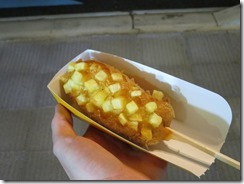
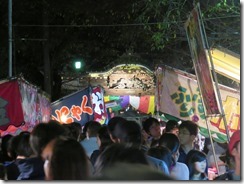
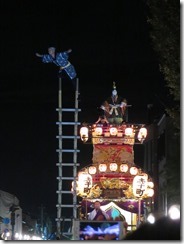
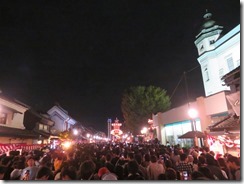
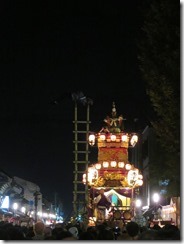
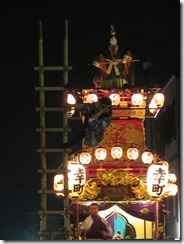
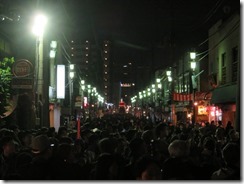
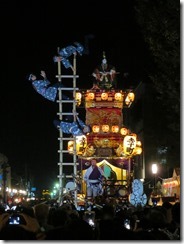

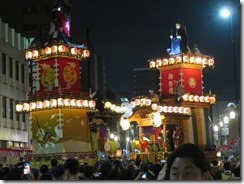
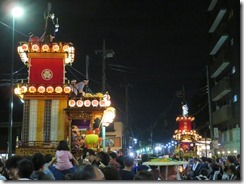
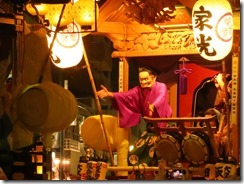
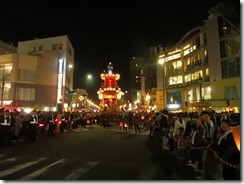
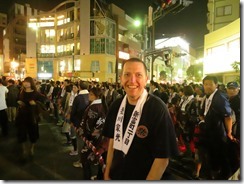

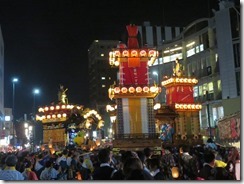
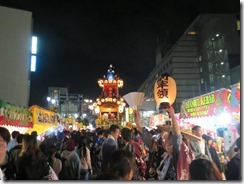
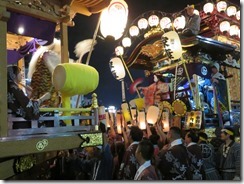

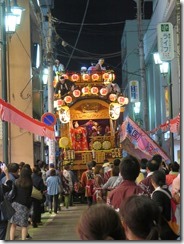
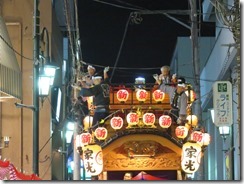
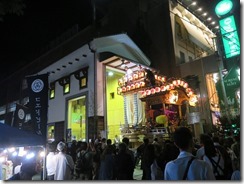
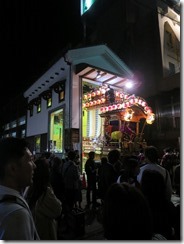
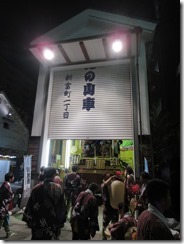
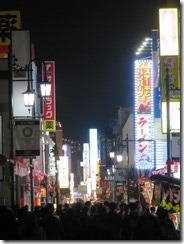
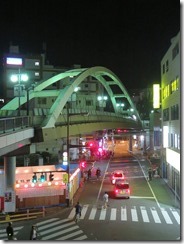
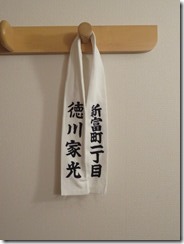
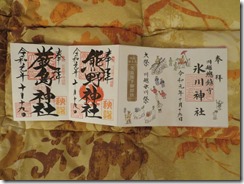
What a great experience! Looks like you had a lot of fun. Thanks for bringing us with you on your adventures.
How fun that you got to actually participate in the parade!